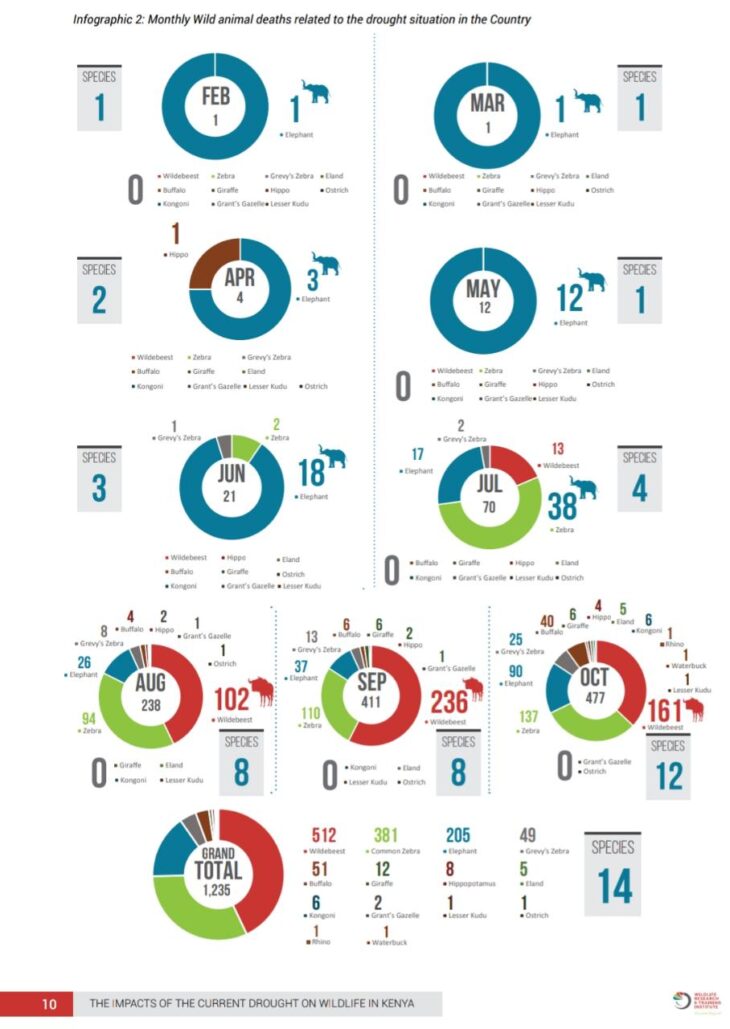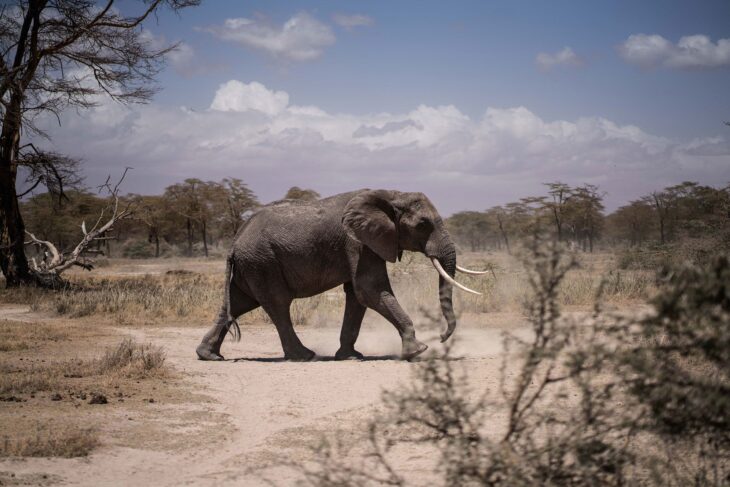NAIROBI, Kenya, Nov, 4 – The worst drought in the last 40 years that continues to ravage the country has caused untold suffering, with more than four million Kenyans left battling starvation.
Equally scores of livestock and the country’s rich wildlife have also been affected with hundreds of animals also dying as a result of the drought.
Now, a report by the Wildlife Training and Research Institute has detailed the effects of the drought between February and October 2022 and there is nothing much to smile about.
In the report, the effects were analyzed in Kenya’s protected areas and surrounding areas.
Kenya is said to have experienced below-average rainfall in the last two rain seasons (October -December 2021 and March-May 2022).
Wildlife mortality data collected by Wildlife Service Rangers, community scouts, and Research teams revealed that 205 Elephants, 51, Buffalos, 49 Grevy Zebras, 381 Common Zebras, and 512 Wildebeests died Between February – October 2022.

The study focused on eight conservation areas as designated by the Kenya Wildlife Service (KWS).
The most affected eco-system nicked Amboseli, Tsavo, and Laikipia-Samburu.
The report indicated that the Rhino population was not much affected in Samburu-Laikipia with only one Rhino aged 2 years at the Ngulia Rhino sanctuary dying as a result of the drought.
The report has meanwhile made several recommendations to mitigate the effects of the drought including, urgent and immediate provision of water as well as salt licks to the most affected ecosystems (Amboseli, Tsavo, Laikipia-Samburu).
As the endangered Grevy Zebras continue to be in danger, they have also recommended the provision of hay to Grevy’s zebra in northern Kenya over the next two months.
“WRTI to be supported to undertake well-structured monitoring of wildlife mortality in all protected areas and key ecosystems to better understand the effects of the drought and recommend future and timely appropriate management action,” said WRTI.
Experts are also calling for enhanced well-structured monitoring of wildlife mortality in all protected areas and key ecosystems to better understand the effects of the drought and recommend future and timely appropriate management action.
“There is a need for an urgent total aerial census of wildlife in the Amboseli ecosystem before the next rain season to determine and evaluate the impact of the current drought on wildlife,”
The National Treasury has meanwhile been urged to allocate funds to support the next National Wildlife Census in 2024 to establish the Impact of the current drought on wildlife populations even as concerted efforts are further required to more funds are needed to support the destocking of Ngulia Rhino Sanctuary (Tsavo West National Park) and prevent any imminent drought-related mortality of black rhino in the sanctuary.
Want to send us a story? Contact Shahidi News Tel: +254115512797 (Mobile & WhatsApp)


